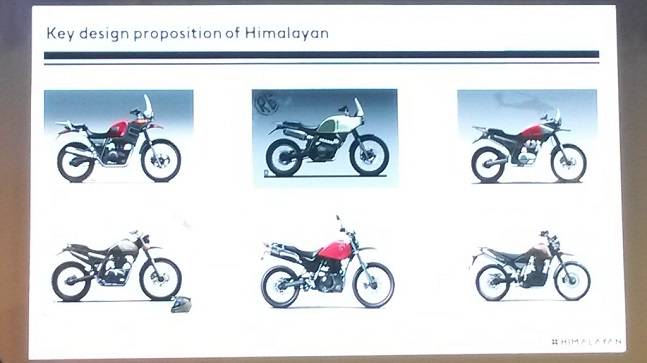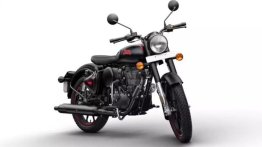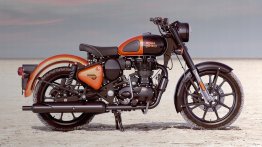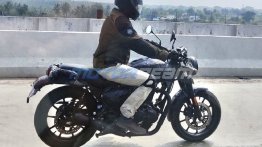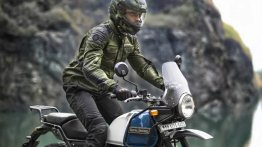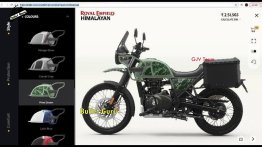The image below was part of a presentation by Royal Enfield during the Himalayan's media launch. The sketches show various designs which could have materialized into production, and motorcycle expert Bhuvan Chowdhary gives his analysis on their designs below - (Going left to right)
Image 1:
Pretty much what the Royal Enfield Himalayan finally launched as. The tall windscreen and the enduro style front mudguard are a perfect fit for an adventure tourer. The minimal body panels would mean a more rugged and durable motorcycle that can take quite a few falls without any major damage to the bike. The best part of this design though is the lowered seat height with significant bucketing that would have promised great ergonomics, a boon for new riders who find taller adventure motorcycles a challenge to begin with. The design also suggests that the ergonomics are more suitable for rugged terrain.
Image 2:
The second concept would have still kept the himalayan quite closely contented as an adventure touring motorcycle with a hint of a sport tourer coming from the bikini fairing at the front. Although, the high mounted scrambler-style exhaust could have been an issue for those who were looking to haul luggage for long distance touring. The larger fairing and higher windscreen though, would have added a bit of beef to the front end while offering better wind protection. The flat-ish seating arrangement would have been more comfortable for the rider and pillion.
Image 3:
This version of the Royal Enfield Himalayan takes the design language more towards a dual sport motorcycle with dual mudguards at the front and a swooping fuel tank design with its curve merging seamlessly with the seat. The absence of a side exhaust means that it would have been mostly an underbody unit, similar to the KTM 200 and 390 Duke, which is never a good idea for an adventure tourer as it would make it susceptible to damage while crossing water bodies.
Image 4:
In this, the design inclination is more towards a street bike, but with a taller front fork arrangement. The higher seating arrangement means that it would have been difficult for novice riders to get accustomed to the motorcycle, while the positioning of the handlebars that are now pulled back towards the tank would not offer ample leverage over the handlebars when standing on the footpegs. More plastic panels towards the back also mean that the bike would have been susceptible to more damage in case of a fall.
Image 5:
Here, the design language with its teardrop shaped fuel tank leans more towards an enduro motorcycle which is great for off-road, but not such a comfortable proposition when using it on regular day-to-day use. Its high handlebars, sharper fork rake angle and tall seating would affect the ride and handling while the underseat exhaust would make it difficult to carry luggage.
Image 6:
If the Himalayan had launched with this design, it would have been a great bike to use on the roads. Its lower seating position and high handebars would make it a comfortable affair. That said, once off-road, things would have been quite different. The apparent low, rear suspension travel would mean that it would have not been so pliant with rough roads in absorbing the bumps like a true adventure tourer should. While the flat seating arrangement is great on a streetbike and an MX motorcycle, it usually is a slippery affair when seen from an adventure sport motorcycle’s perspective. A single flat seat would mean less grip while going over the rough stuff. Back on the highway, the absence of a windscreen would have rendered the rider more prone to wind blasts, which reduces average speeds while increasing fatigue on long journeys.
